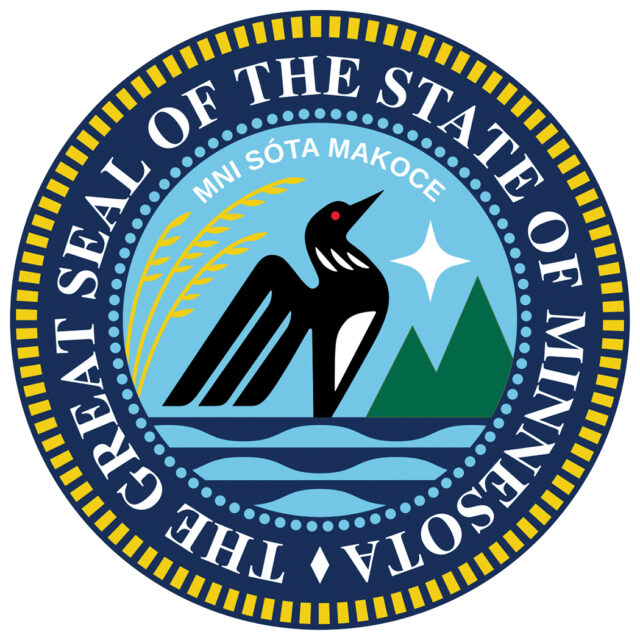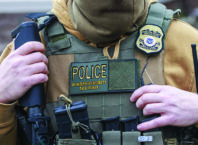
By Lee Egerstrom
Minnesota became a state on May 11, 1858. On this same day 166 years later, Minnesota adopted a new flag and state seal that clearly show off its natural resources and its indigenous heritage.
Minnesota’s cultural sensitivities are being raised as well.
The Minnesota Legislature called for new official symbols in the 2013 session when it was approving a massive amount of legislation honoring and supporting the state’s anchor citizens. The new flag and state seal that emerged were hoisted on statehood day, when the Legislature was still in its 2024 session, and before new indigenous-oriented legislation could be tallied.
Both new symbols are representative of the state’s continuing and growing awareness of Minnesota’s deep history with its native population.
In other actions, the Minnesota Historical Society made news at month’s end by announcing it will return the so-called “Mankato Hanging Rope” to the Prairie Island Indian Community (PIIC). In a report by Cole Premo for CBS Minnesota (WCCO), it was explained the rope had been in the MNHS collection since 1869.
It was used as part of the largest mass execution in U.S. history after the U.S.-Dakota War of 1862 at Mankato. This rope was used on Wicanhpi Wastedanpi, one of the 38 Dakota men hanged that day.
The historical society explained its decision this way: “This is a harmful and painful object that does not reflect the mission and the values of MNHS today.”
PIIC had requested the return of the rope through the Native American Graves Protection and Repatriation Act. The request was supported by all 11 federally recognized tribes in Minnesota. The MN Historical Society is now filing papers for the return under that federal act.

The rope was reportedly stolen from Wastedanpi’s grave, a precise example of what the federal act is trying to correct with holders of stolen sacred objects..
A day after that announcement, on May 30, Shakopee High School became the first school system in Minnesota known to offer smudging space for its students. That it should be Shakopee isn’t too surprising given its location near the Shakopee Mdewakanton Sioux Community.
But in a report, again for CBS Minnesota by Jason Rantala, Shakopee’s American Indian Education Coordinator Justyne Vogel said smudging space had been under study for several years. The school district has more than 200 native students enrolled from 28 different tribal nations.
The project was funded by a grant from the Shakopee Education Endowment Foundation and was designed for and by the native students.
The new state symbols are other examples of Minnesota’s growing cultural awareness.
Over the years, Native Minnesotans had objected – often to closed ears – that the state flag was demeaning. It showed a possible immigrant farmer planting a field while an American Indian man rides out of sight on horseback.
Polite educators sometimes tried to put a good face on it. It could mean the new Minnesotan and the original Minnesotan were simply sharing space and living side by side. But that interpretation didn’t hold water with people more knowledgeable about Minnesota history.
While the new flag salutes Minnesota’s abundant water resources, skies and the North Star, the new state seal really incorporates Minnesota natural gifts and its indigenous history, and especially the state’s name that does both.
Both State Rep. Heather Keeler, an enrolled member of the Yankton Sioux Tribe who represents the Moorhead and surrounding area in the Minnesota House of Representatives, and Minnesota Secretary of State Steve Simon direct friends and constituents to a tutorial on how to properly pronounce Minnesota in the original Dakota language
Proudly printed on the new seal is the proper Dakota name for the state, Mni Sóta Makoce, and translated as “Land where the waters reflect the skies.”
Secretary Simon also notes that the circle depicted on the new state seal also shows images of wild rice (manoomin), the state’s official grain; the common loon, the state bird; trees, represented by the state tree the Norway Pine; and “a stylized representation of water” representing Minnesota’s lakes, rivers and streams.
Explanations for the new flag and seal can be found at MN Secretary of State website at: https://sos.mn.gov/about-minnesota/state-symbols/state-seal.
Minnesota Public Radio has a site online where UofMN Dakota language experts teach the proper pronunciation of Mni Sóta Makoce. It is available at: https://www.mprnews.org/story/2023/12/15/how-to-pronounce-mni-sta-makoce-the-dakota-phrase-that-will-be-the-new-state-seal.






